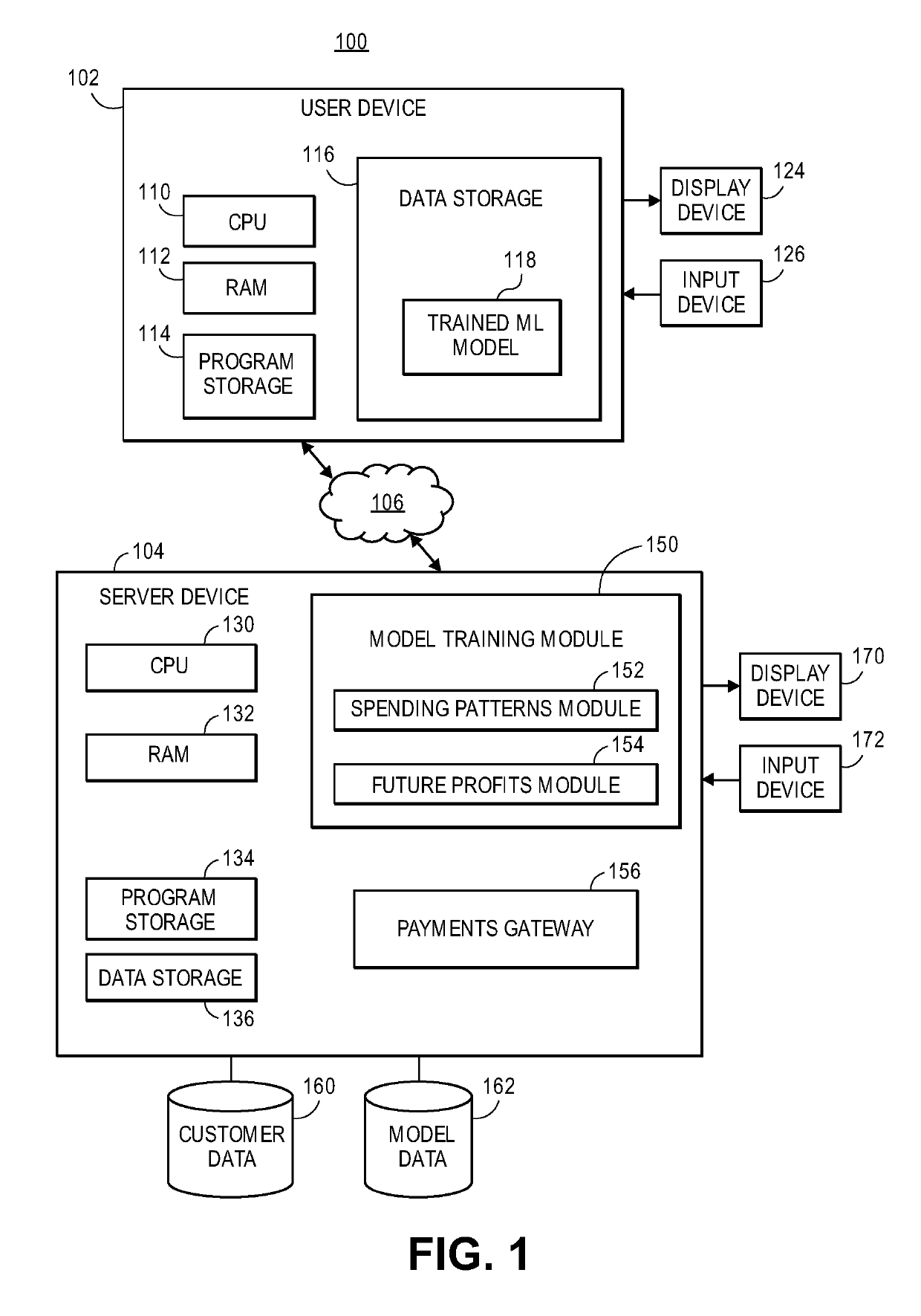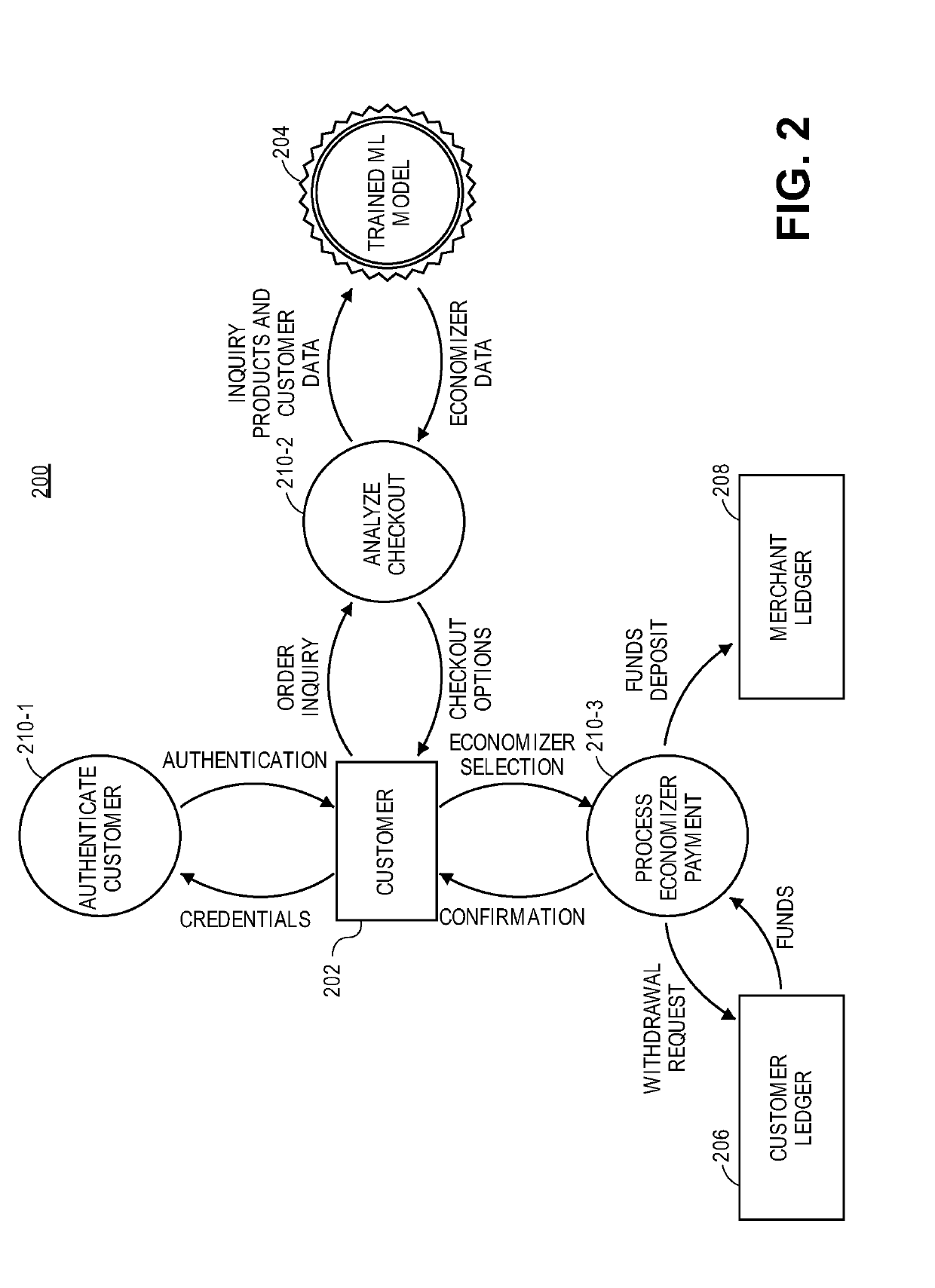Dynamic economizer methods and systems for improving profitability, savings, and liquidity via model training
a dynamic economizer and model training technology, applied in the field of systems and methods for improving profitability, saving, liquidity, etc., can solve the problems of merchants being unable to compare credit card processing/transaction fees directly, and the inability to compare them as between intermediaries,
- Summary
- Abstract
- Description
- Claims
- Application Information
AI Technical Summary
Benefits of technology
Problems solved by technology
Method used
Image
Examples
Embodiment Construction
I. Overview
[0020]The embodiments described herein relate to, inter alia, methods and systems for facilitating liquidity transaction processing without using a central counterparty while also lowering prices and improving profitability. More specifically, in some embodiments, machine learning (ML) or other models may be trained which may allow merchants to offer a superior alternative to existing intermediary-based fee-charging systems (e.g., credit cards) while simultaneously lowering prices to customers and improving the profitability of the merchants' stores. The methods and systems described herein may include numerous economic benefits to both consumers and merchants.
[0021]For example, merchants may provide an ongoing source of liquidity that consumers may draw upon to make purchases, and the cost to merchants of providing this source of liquidity may be far less than the cost of paying transaction fees to central counterparty banks to process consumer purchases made with a cred...
PUM
 Login to View More
Login to View More Abstract
Description
Claims
Application Information
 Login to View More
Login to View More - R&D
- Intellectual Property
- Life Sciences
- Materials
- Tech Scout
- Unparalleled Data Quality
- Higher Quality Content
- 60% Fewer Hallucinations
Browse by: Latest US Patents, China's latest patents, Technical Efficacy Thesaurus, Application Domain, Technology Topic, Popular Technical Reports.
© 2025 PatSnap. All rights reserved.Legal|Privacy policy|Modern Slavery Act Transparency Statement|Sitemap|About US| Contact US: help@patsnap.com



